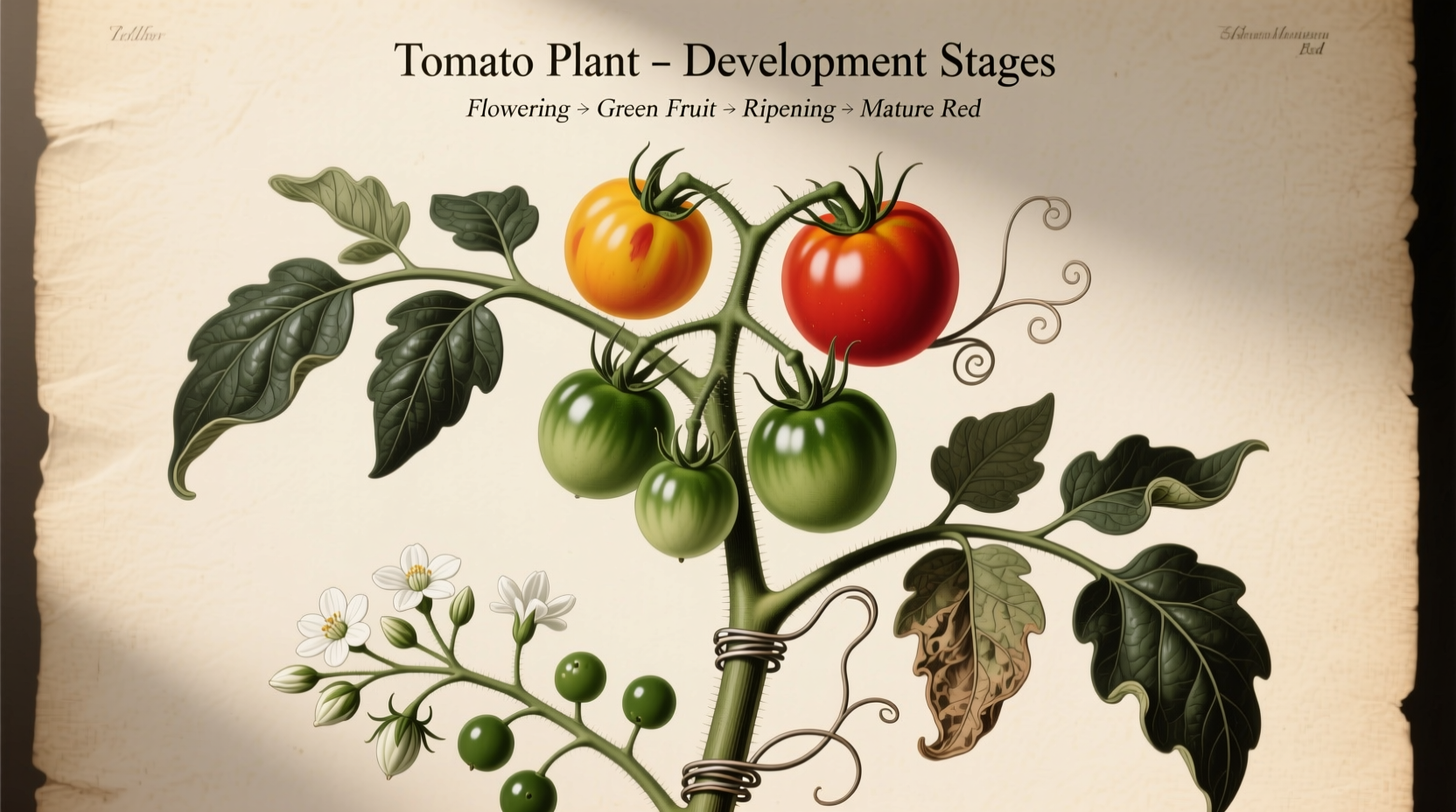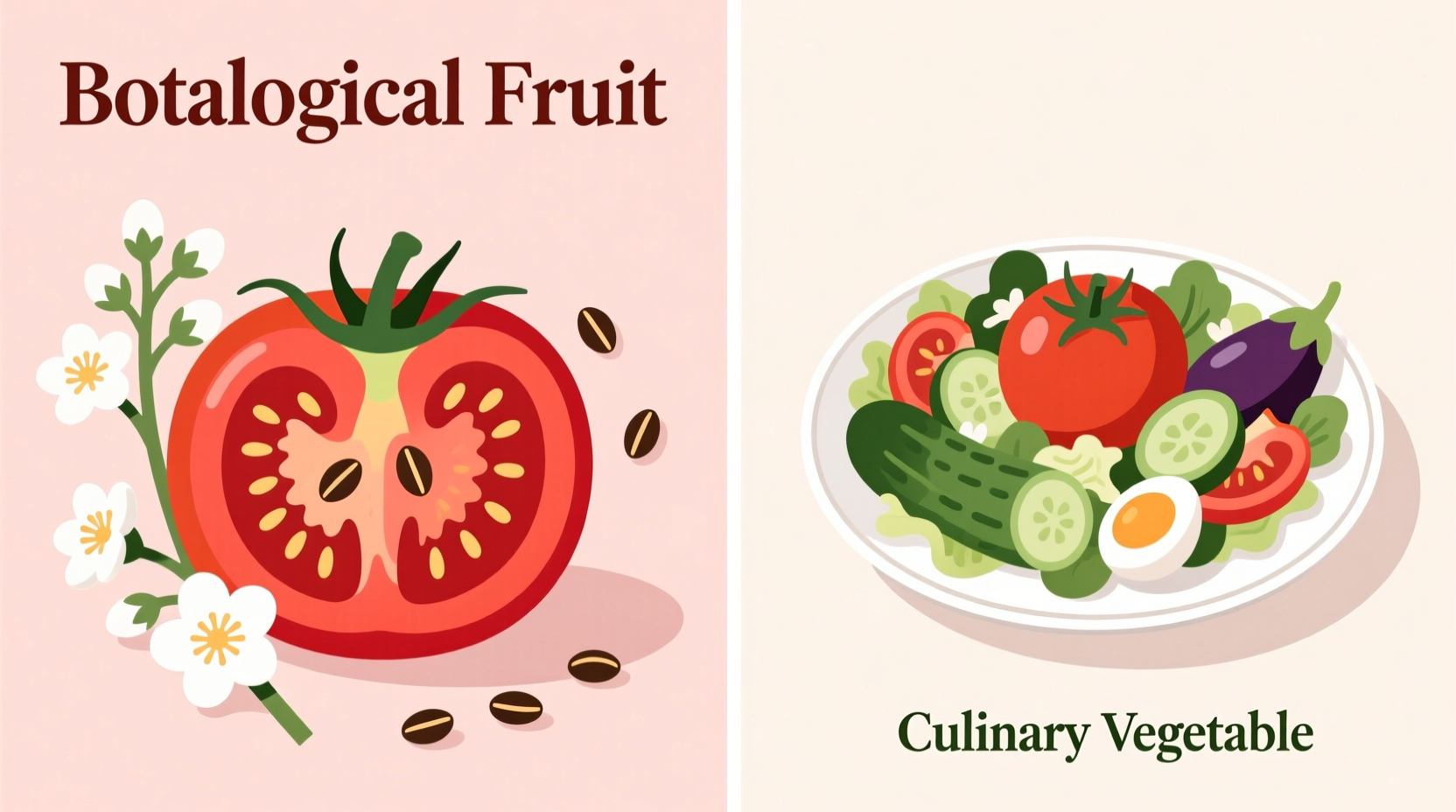Have you ever wondered why your salad tomato sits in the vegetable section at the grocery store while being scientifically classified as a fruit? This botanical paradox has confused home cooks and professional chefs alike for generations. Understanding this classification isn't just academic—it affects how we grow, prepare, and even legally define this versatile food. In this article, you'll discover the precise scientific reasoning behind tomatoes' fruit status, the historical context of their culinary misclassification, and how this knowledge can improve your cooking and gardening practices.
The Botanical Definition That Makes Tomatoes Fruits
From a botanical perspective, a fruit is the mature ovary of a flowering plant, typically containing seeds. This scientific definition focuses on plant reproduction rather than taste or culinary use. When a tomato flower is pollinated, the ovary swells and develops into what we recognize as the tomato fruit, with seeds embedded in the gelatinous matrix inside.
"The botanical definition is clear and consistent," explains Dr. Linda Brown, a plant biologist at Cornell University's School of Integrative Plant Science. "Any structure that develops from the flower's ovary and houses the plant's seeds qualifies as a fruit, regardless of its flavor profile or how humans choose to use it in cooking."
| Classification Type | Definition Criteria | Tomato Status |
|---|---|---|
| Botanical | Develops from flower ovary, contains seeds | Fruit |
| Culinary | Sweetness level, typical usage in dishes | Vegetable |
| Legal (US) | Tariff classification for import purposes | Vegetable |
Historical Context: How Tomatoes Got Misclassified
The tomato's journey from botanical fruit to culinary vegetable began with its introduction to Europe from the Americas in the 16th century. European botanists correctly identified tomatoes as fruits, but cooks treated them as vegetables due to their savory flavor. This culinary convention became so entrenched that in 1893, the U.S. Supreme Court case Nix v. Hedden officially classified tomatoes as vegetables for tariff purposes.
The court's decision acknowledged the botanical reality while prioritizing common usage: "Botanically speaking, tomatoes are the fruit of a vine, just as a cucumber, green pepper, or eggplants, but in the common language of the people... all these are vegetables which are grown in garden and are usually served at dinner in, with, or after the soup, fish, or meats which constitute the principal part of the repast, and not, like fruits, generally as dessert."

Why the Distinction Matters in Your Kitchen
Understanding tomatoes' botanical classification isn't just academic—it has practical implications for cooking. Because tomatoes are fruits, they contain natural sugars and acids that behave differently in cooking than true vegetables. This explains why tomatoes:
- Pair well with other fruits in salsas and chutneys
- Benefit from similar preservation techniques as stone fruits
- React differently to heat than root vegetables
- Contain higher levels of certain vitamins common in fruits
Chef Thomas Keller notes, "When you understand that tomatoes are fruits, you start approaching them with the same care you would give peaches or berries—handling them gently, understanding their ripening process, and respecting their delicate balance of sugar and acid."
Other Culinary Vegetables That Are Botanical Fruits
Tomatoes aren't alone in this classification paradox. Many foods we treat as vegetables are technically fruits by botanical standards:
- Cucumbers - Develop from flower ovaries and contain seeds
- Eggplants - Formed from the ovary of the flower with numerous seeds
- Peppers - Whether sweet bell peppers or spicy chilies, all develop from flower ovaries
- Zucchini and other squash - Technically fruits known as "pepos"
- Okra - Forms from the ovary and contains numerous seeds
This group shares the characteristic of developing from the flower's ovary and containing seeds, meeting the botanical definition of fruit despite their savory culinary applications.
Practical Implications for Gardeners and Cooks
For home gardeners, recognizing tomatoes as fruits affects how you approach cultivation. Fruit-bearing plants typically require different care than vegetable plants:
- Fruit plants often need more consistent watering to prevent splitting
- They may require different nutrient balances during fruiting stages
- Understanding ripening processes helps determine optimal harvest times
- Storage methods differ—many fruits continue ripening after harvest
When cooking, this knowledge helps explain why certain techniques work better with tomatoes. Their fruit status means they contain pectin (like apples), which helps sauces thicken, and natural sugars that caramelize beautifully when roasted.











 浙公网安备
33010002000092号
浙公网安备
33010002000092号 浙B2-20120091-4
浙B2-20120091-4